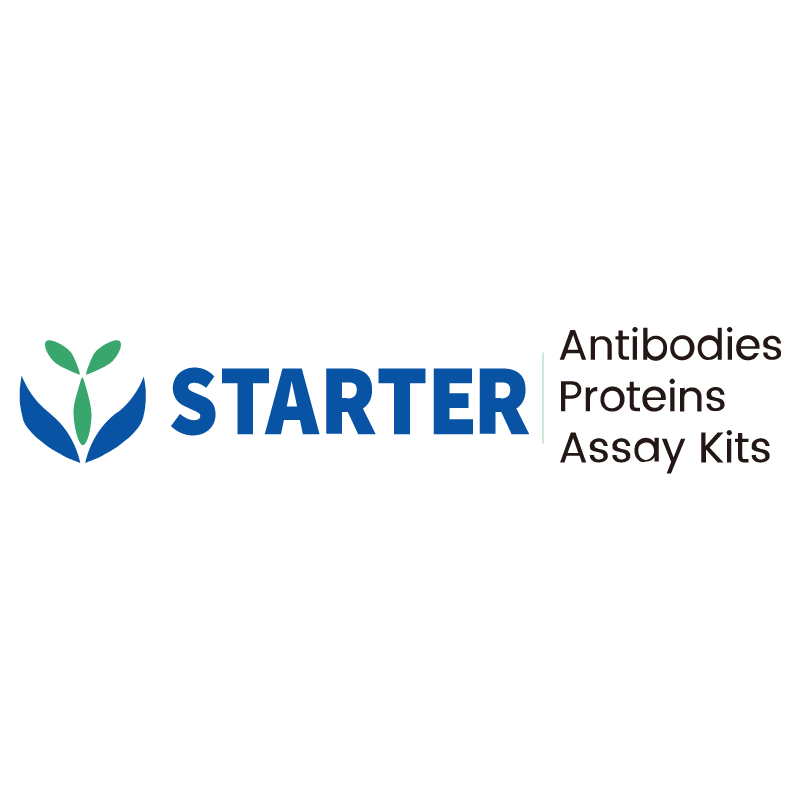WB result of IGJ Rabbit mAb
Primary antibody: IGJ Rabbit mAb at 1/500 dilution
Lane 1: Daudi whole cell lysate 20 µg
Lane 2: Ramos whole cell lysate 20 µg
Lane 3: Raji whole cell lysate 20 µg
Secondary antibody: Goat Anti-Rabbit IgG, (H+L), HRP conjugated at 1/10000 dilution
Predicted MW: 18 kDa
Observed MW: 23 kDa
Product Details
Product Details
Product Specification
| Host | Rabbit |
| Antigen | IGJ |
| Synonyms | Immunoglobulin J chain, Joining chain of multimeric IgA and IgM, JCHAIN, IGCJ |
| Immunogen | Recombinant Protein |
| Location | Secreted |
| Accession | P01591 |
| Clone Number | S-342-48 |
| Antibody Type | Recombinant mAb |
| Application | WB, IHC-P, IP |
| Reactivity | Hu |
| Purification | Protein A |
| Concentration | 0.25 mg/ml |
| Conjugation | Unconjugated |
| Physical Appearance | Liquid |
| Storage Buffer | PBS, 40% Glycerol, 0.05%BSA, 0.03% Proclin 300 |
| Stability & Storage | 12 months from date of receipt / reconstitution, -20 °C as supplied |
Dilution
| application | dilution | species |
| WB | 1:500 | |
| IP | 1:25 | |
| IHC-P | 1:4000 |
Background
The Joining (J) chain is a protein component that links monomers of antibodies IgM and IgA to form polymeric antibodies capable of secretion. The J chain regulates the multimerization of IgM and IgA in mammals. When expressed in cells, it favors the formation of a pentameric IgM and an IgA dimer. The J chain is incorporated late in the formation of IgM polymers and thermodynamically favors the formation of pentamers as opposed to hexamers. The J chain facilitates IgA dimerization by linking two monomer secretory tails. Structurally, the J chain joins two antibody monomers asymmetrically by forming intermolecular disulfide bonds and bringing hydrophobic β-sandwiches on each molecule together.
Picture
Picture
Western Blot
IP
IGJ Rabbit mAb at 1/25 dilution (1 µg) immunoprecipitating IGJ in 0.4 mg Daudi whole cell lysate.
Western blot was performed on the immunoprecipitate using IGJ Rabbit mAb at 1/500 dilution.
Secondary antibody (HRP) for IP was used at 1/400 dilution.
Lane 1: Daudi whole cell lysate 20 µg (Input)
Lane 2: IGJ Rabbit mAb IP in Daudi whole cell lysate
Lane 3: Rabbit monoclonal IgG IP in Daudi whole cell lysate
Predicted MW: 18 kDa
Observed MW: 23 kDa
Immunohistochemistry
IHC shows positive staining in paraffin-embedded human tonsil. Anti-IGJ antibody was used at 1/4000 dilution, followed by a HRP Polymer for Mouse & Rabbit IgG (ready to use). Counterstained with hematoxylin. Heat mediated antigen retrieval with Tris/EDTA buffer pH9.0 was performed before commencing with IHC staining protocol.
IHC shows positive staining in paraffin-embedded human spleen. Anti-IGJ antibody was used at 1/4000 dilution, followed by a HRP Polymer for Mouse & Rabbit IgG (ready to use). Counterstained with hematoxylin. Heat mediated antigen retrieval with Tris/EDTA buffer pH9.0 was performed before commencing with IHC staining protocol.
IHC shows positive staining in paraffin-embedded human breast cancer. Anti-IGJ antibody was used at 1/4000 dilution, followed by a HRP Polymer for Mouse & Rabbit IgG (ready to use). Counterstained with hematoxylin. Heat mediated antigen retrieval with Tris/EDTA buffer pH9.0 was performed before commencing with IHC staining protocol.
IHC shows positive staining in paraffin-embedded human cervical squamous cell carcinoma. Anti-IGJ antibody was used at 1/4000 dilution, followed by a HRP Polymer for Mouse & Rabbit IgG (ready to use). Counterstained with hematoxylin. Heat mediated antigen retrieval with Tris/EDTA buffer pH9.0 was performed before commencing with IHC staining protocol.


